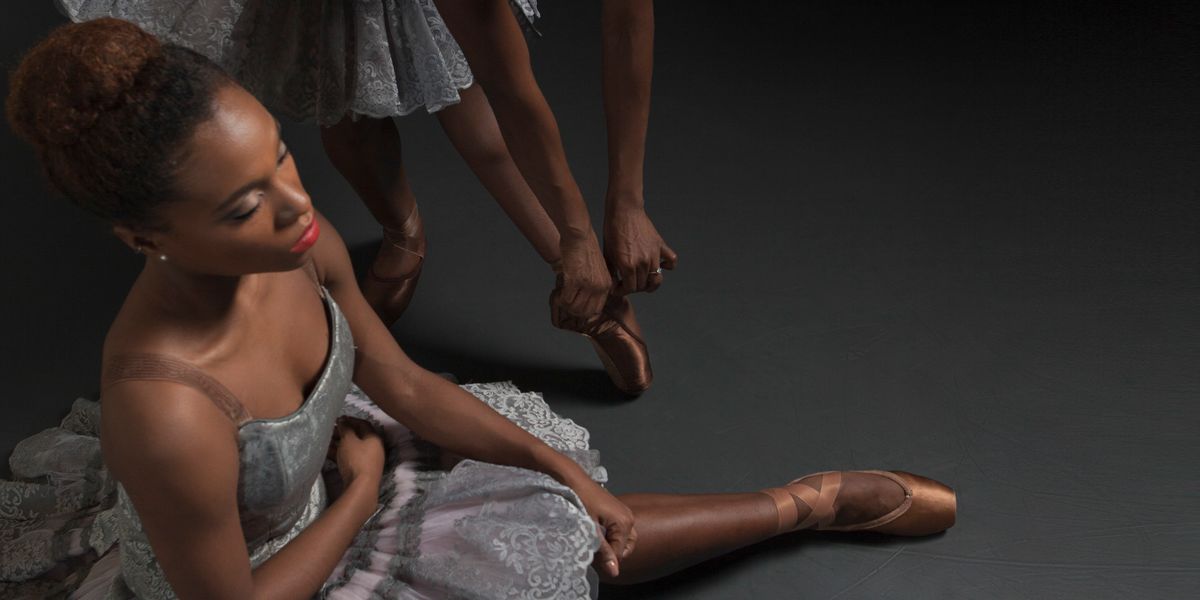6 Pointe Shoe Manufacturers Commit to Offering More Diverse Shades
In the wake of Black Lives Matter protests sparked by the killings of Ahmaud Arbery, Breonna Taylor and George Floyd, online pressure brought an ongoing issue with dancewear brands to an inflection point. For too long, the very color of the tools of the craft—in particular, pointe shoes—spoke to exclusion, with color offerings overwhelmingly geared toward white dancers. But in the course of a few days this June, first Bloch, then Russian Pointe, Capezio, Nikolay, Grishko and Suffolk announced a commitment to offering darker hues of tights and shoes. Capezio will offer the additional shades for two of its most popular shoes in stock, while the others have signaled that they will be available by special order.
Flesh-tone tights and shoes were debuted by the young Dance Theatre of Harlem in 1974, thanks to the persistence of the espresso-toned Llanchie Stevenson, who is credited with convincing Arthur Mitchell to adopt the look. The act was a declaration of ownership over the art form, and a redefinition of classicism. In the early days, DTH wardrobe mistress Zelda Wynn soaked the tights in tea, then used Tintex Dye to replicate the skin-tones of the dancers. Spray paint was used to obscure the ballet pink of slippers and pointe shoes. For a certain generation of DTH dancers, hearing the rattle of the ball bearing in a spray can sounds like home.
For a short time in the 1980s, Capezio did offer brown pointe shoes. However, according to Gayle Miller, a former president and an owner of the Capezio Retail Group, the combination of the breadth of colors needed and low demand led to them being discontinued. Today, while darker shades of tights can be found, Black ballet dancers spend a great deal of time and money pancaking shoes to match their complexions.
Gaynor Minden launched its sepia line in 2017, followed by Freed a year later. Bloch’s announcement this summer, however, came days after a two-year-old Change.org petition asking the company to diversify its shade offerings went viral. After Bloch committed to adding brown hues to its offerings, Black ballerina Aerys Merrill (who joined Northern Ballet this fall) created a petition to get all dancewear brands to expand the colors offered for tights and shoes. “With everyone speaking up recently about racial injustice and inequality, I was inspired and encouraged to be courageous,” she says. “Why just one brand? Why not encourage all pointe shoe brands to join in as well?”
Should it have taken an uprising and petitions for brands to become more inclusive? The timing may seem reactionary. According to Russian Pointe, however, the “RP Palette line had been in development for the last few years. This development was not in response to the petition.” Several components of the line were launched in February, but pointe shoes were delayed due to the pandemic. Similar COVID-related supplier issues were echoed in Nikolay, Suffolk and Bloch’s announcements. “We have not been moving fast enough,” Bloch admitted. But these brands’ commitment to the introduction of more diverse shades of pointe shoes is progress, however it came about.
Beyond Ballet

At the end of July, popular character-shoe brand LaDuca Shoes launched LaDuca Palette, making 17 of its styles available in four new shades designed for BIPOC dancers.




